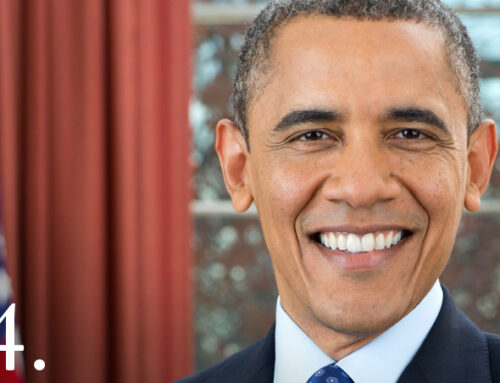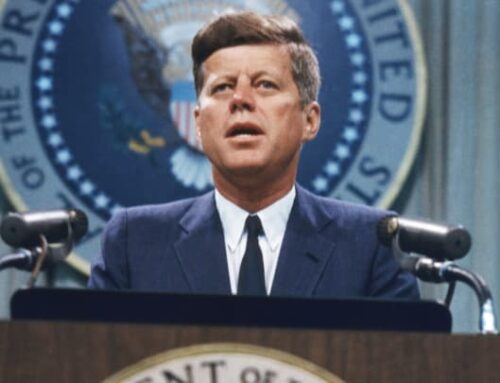
Ronald Reagan was the 40th President of the United States. He served two terms in office, from 1981 to 1989, and he is remembered for his conservative economic policies and his role in ending the Cold War.
Reagan was born in Illinois in 1911, and he grew up in a small town. After working as an actor in Hollywood, he entered politics and was elected Governor of California in 1966. He ran for President in 1980 and defeated incumbent Jimmy Carter, becoming the oldest person to be elected to the office at the time.
As President, Reagan pursued several policies that were aimed at reducing the size and scope of the federal government. He cut taxes, reduced regulations, and limited the growth of social programs, to boost the economy and promote individual responsibility. These policies, known as Reaganomics, were controversial at the time, but many credit them with helping to usher in a period of economic growth and prosperity.
Reagan was also a strong advocate for a strong national defense, and he increased military spending and deployed American troops abroad to combat terrorism and the spread of communism. He is perhaps best known for his role in ending the Cold War, through a combination of military strength and diplomatic engagement with the Soviet Union.
Overall, Ronald Reagan was a transformative figure in American politics. He will be remembered for his conservative economic policies and his leadership during a time of international upheaval.
So what is a thing which I can relate to him? his role in the implementation of Reaganomics, a set of economic policies that aimed to stimulate economic growth and reduce inflation. During his campaign, President Reagan promised to reduce taxes and government spending, which he believed would stimulate economic growth. He also proposed a decrease in government regulation and an increase in military spending. These policies were collectively known as Reaganomics.
Simply, Reaganomics includes the reduction of government spending, Reducing federal income tax and capital gain, reduction in government regulation, and tight money supply.
After taking office, President Reagan implemented a series of tax cuts, including the Economic Recovery Tax Act of 1981, which reduced marginal income tax rates by 25%. He also proposed significant cuts to government spending, particularly in welfare programs.
Reaganomics had a significant impact on the country’s financial landscape. The tax cuts helped to stimulate economic growth, and the unemployment rate decreased. However, the government spending cuts also led to a decrease in services for low-income individuals and an increase in the national debt.
First things first. Yes. Government can increase its income by reducing taxes. But there is a catch. This will happen only when taxes are already heavy. When a large part of taxpayers including industrialists start thinking that Tax is a burden and it’s heavy or there is no incentive to pay tax, many of them start making less money. If you plot this tendency on a graph this will be more like a semi-circle. With 0% tax, Government will not make any income. With 100% tax also Government will not make any income. So the point in between will make that difference and this is true. In the Maharashtra state of India, during the COVID pandemic, When the government reduced taxes to give Boost to the real estate sector, the government reduced taxes on Some properties, and the income of the government increased.
Reagan’s first major policy was the Economic Recovery Tax Act of 1981, which reduced federal income tax rates across the board by 25 percent. The top marginal tax rate was reduced from 70 percent to 50 percent, while the bottom rate was reduced from 14 percent to 11 percent. The goal of this tax cut was to provide people with more money to spend, thereby boosting consumer demand and economic growth.
With the highest tax slab of around 70%. No shock that reducing tax rates was helpful.
In addition to reducing taxes, Reagan also reduced government spending. He signed a bill that reduced the growth of Social Security benefits and cut funding for other social programs such as Medicaid, food stamps, and welfare. Reagan also reduced the number of federal employees and capped the growth of non-defense spending.
Reagan’s economic policies also included deregulation, which aimed to reduce the role of government in the economy and allow businesses to operate more freely. He signed several bills that deregulated industries such as airlines, trucking, and telecommunications, which led to increased competition, lower prices, and improved service for consumers.
Government expenditure can increase inflation but when the economy is in a crisis, hardly any private industry is ready to invest. So it’s always the government that is supposed to invest. What we saw dusting the Global financial crisis was perfect. Governtmwas forcefully invested money into many banks and kept the money supply high. Cutting social security is another way. This can help in reducing inflation but also affect people’s purchasing capacity.
Reagan believed that the government was a problem, not a solution and that it was stifling economic growth by over-regulating businesses and over-taxing citizens. Exactly the opposite of what Franklin D Roosevelt thought. He argued that the government was spending too much money on social programs and not enough on military defense and infrastructure. He believed that cutting taxes and reducing government spending would stimulate economic growth, create jobs, and increase tax revenues, thereby reducing the budget deficit.
The Reagan years saw a period of strong economic growth and job creation. The economy grew at an average annual rate of 4.2 percent from 1983 to 1988, and unemployment fell from over 10 percent in 1982 to just under 5 percent in 1988. Inflation also fell from over 13 percent in 1980 to just under 4 percent in 1988.
In conclusion, Reaganomics was a major shift in economic policy that aimed to reduce government intervention in the economy and stimulate economic growth. The policies of tax cuts, reduced government spending, and deregulation helped the economy recover from the 1982 recession and led to strong economic growth and job creation.
However, the impact of Reaganomics remains a subject of debate, with some arguing that it was beneficial and others arguing that it had negative consequences. Regardless of one’s perspective, Reaganomics played a significant role in shaping the economic policies of the United States and continues to influence debates about the role of government in the economy today.




